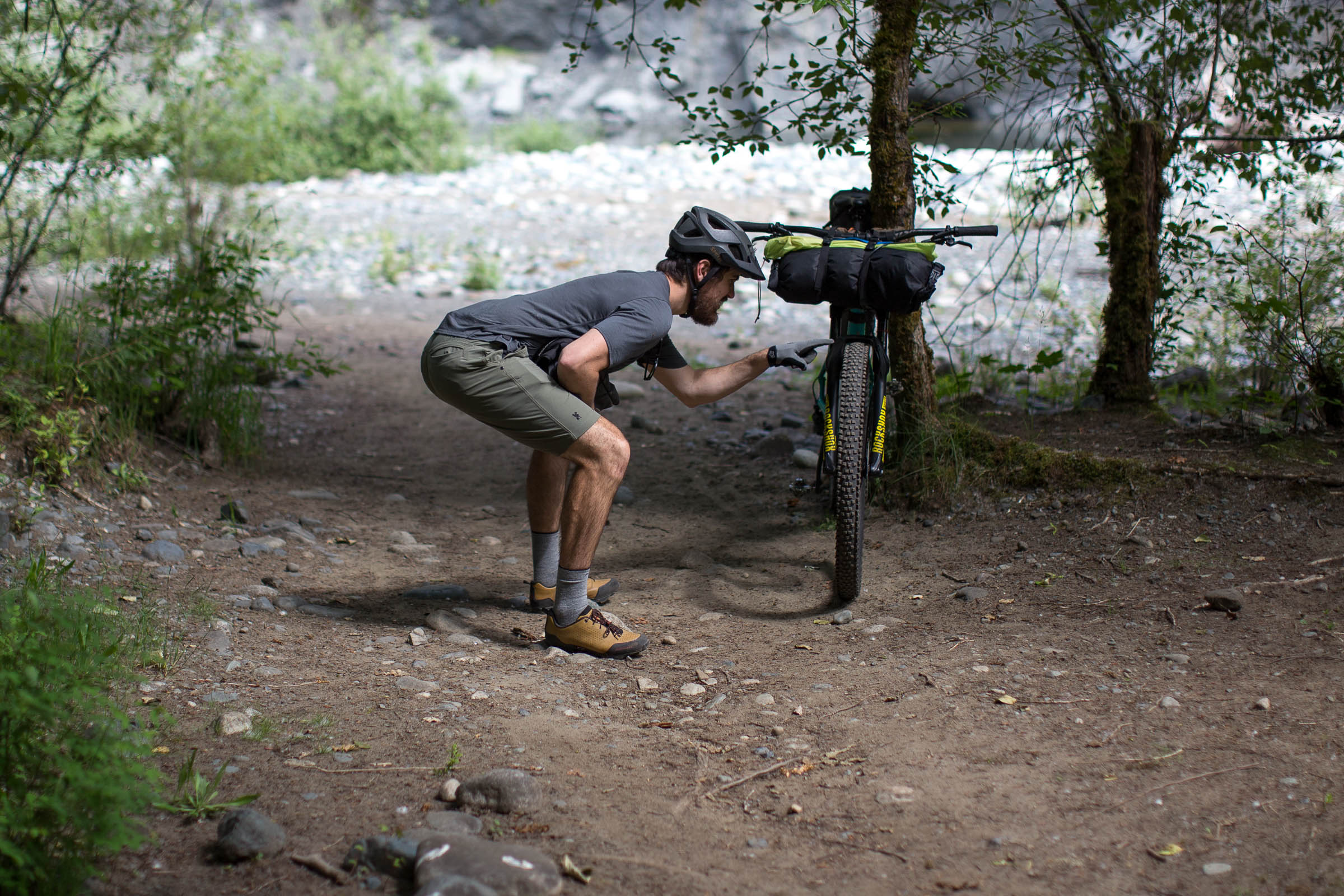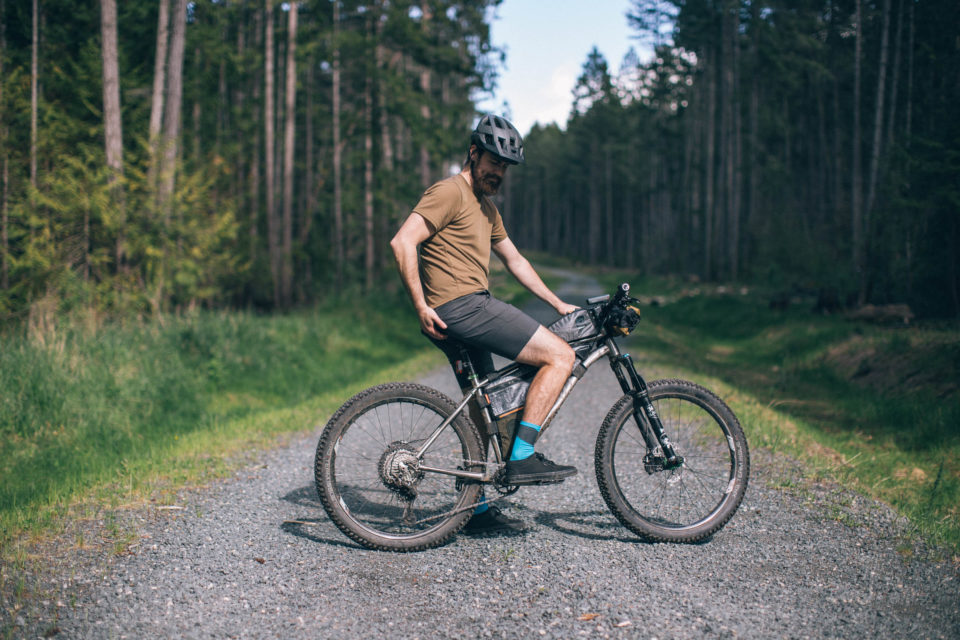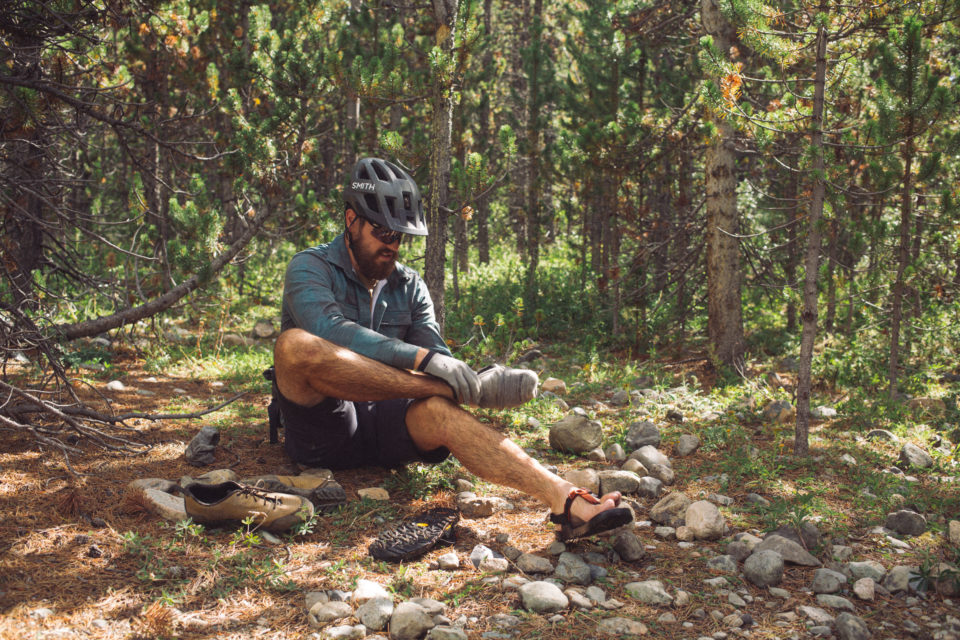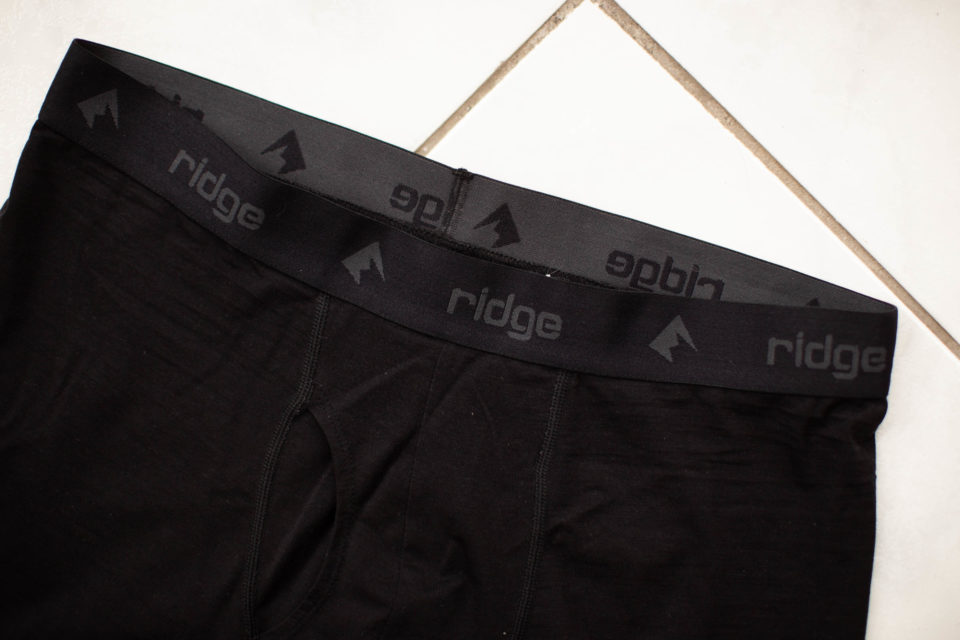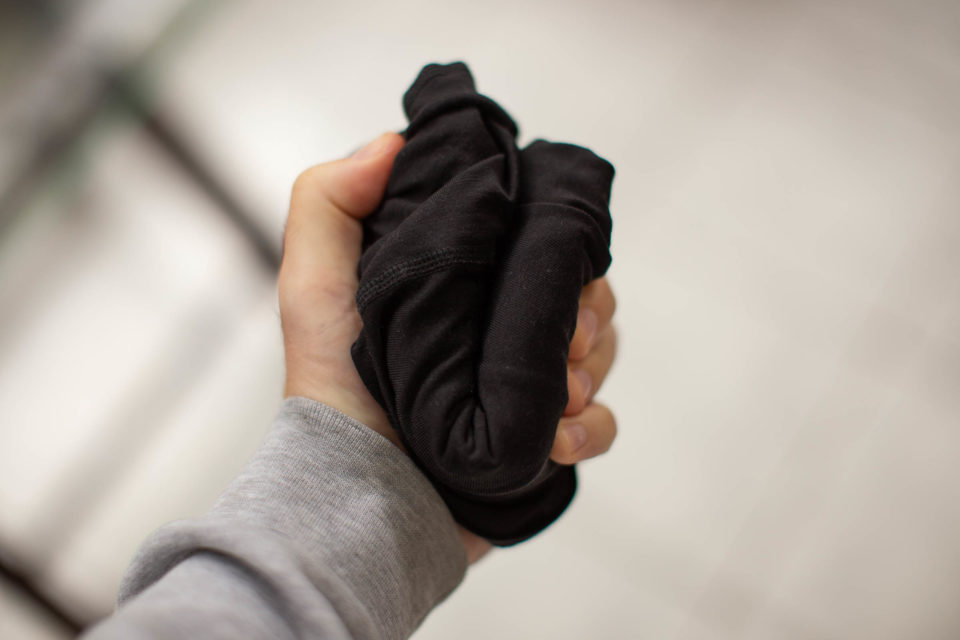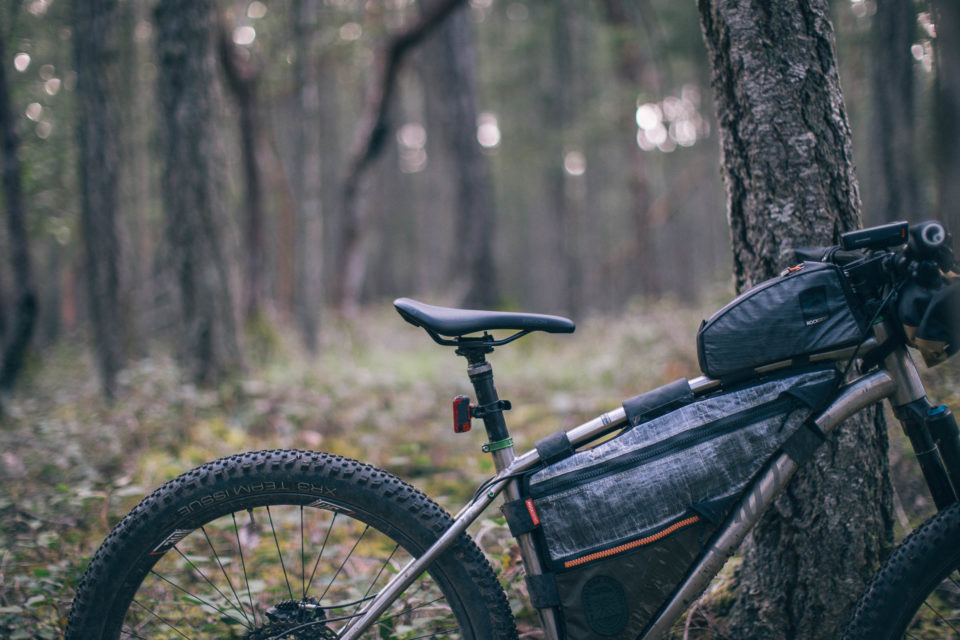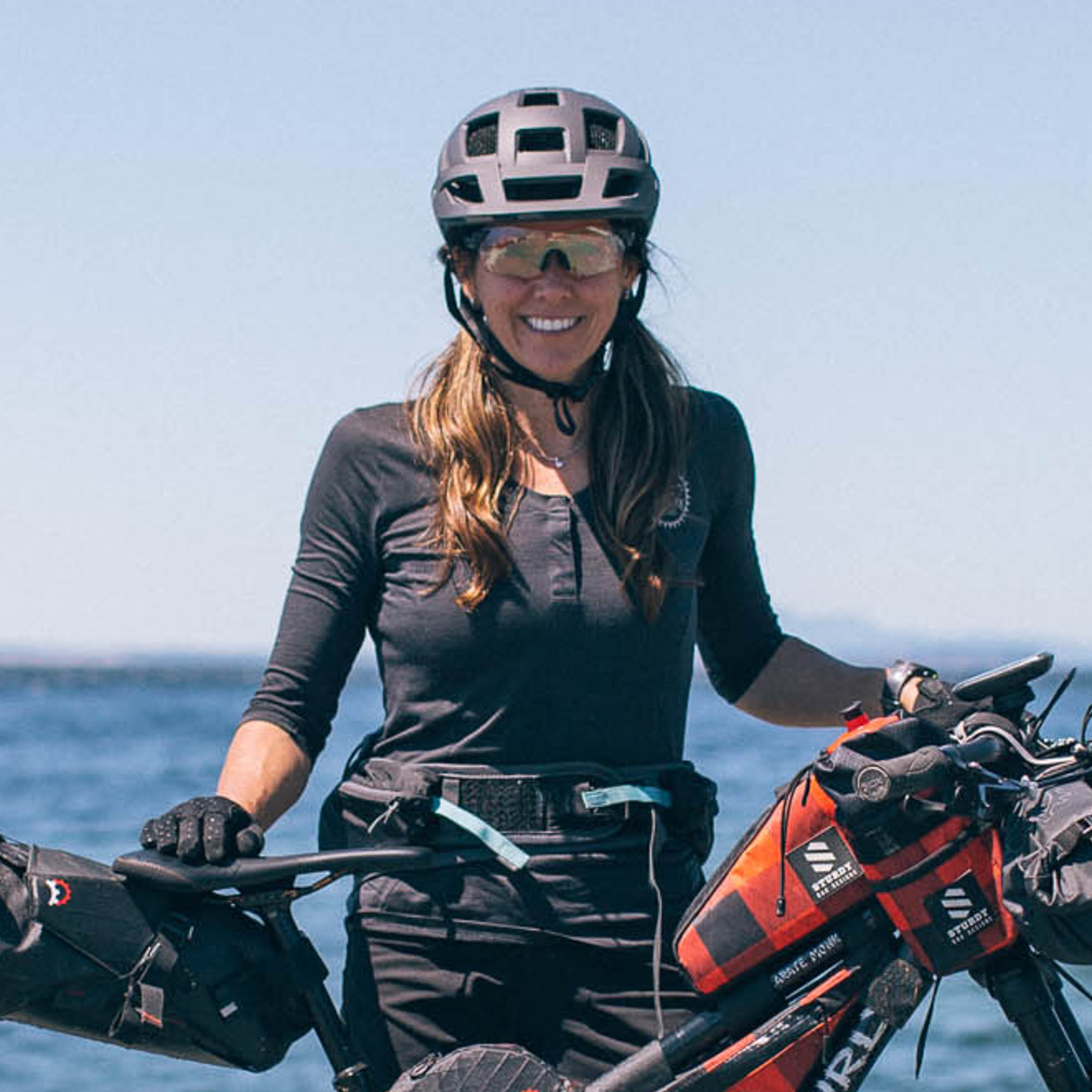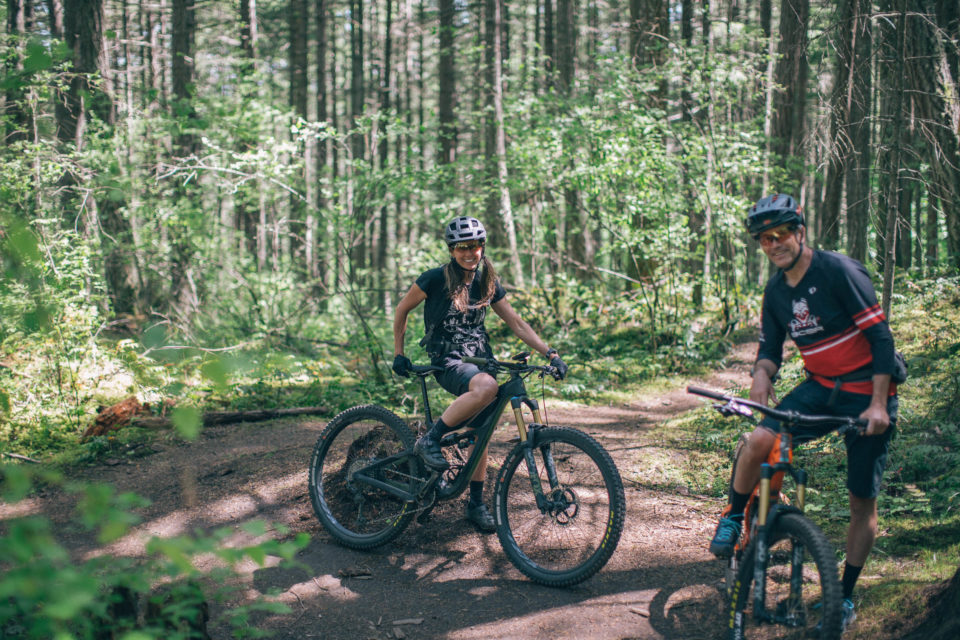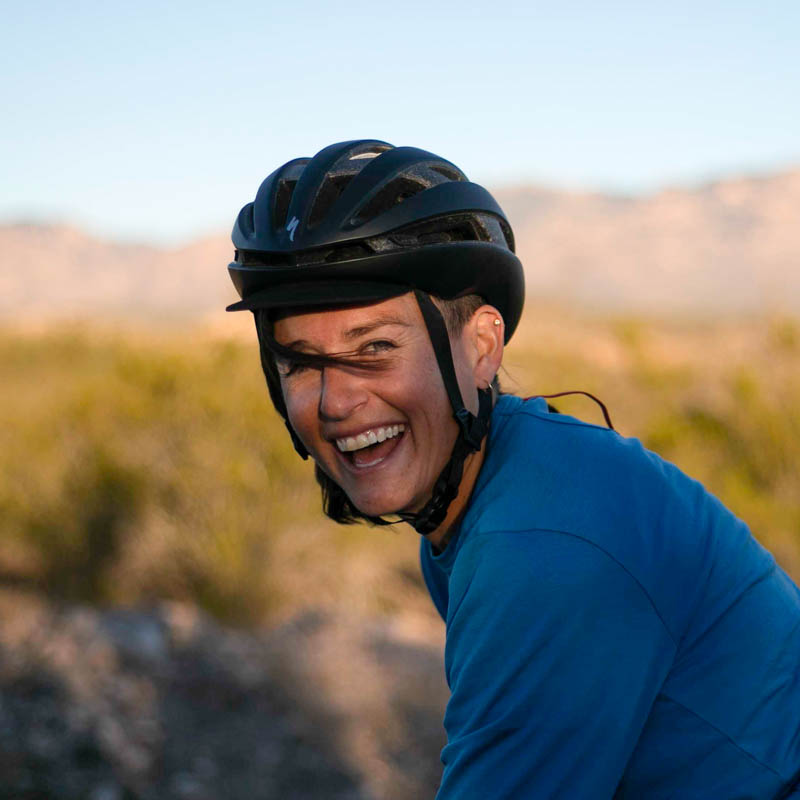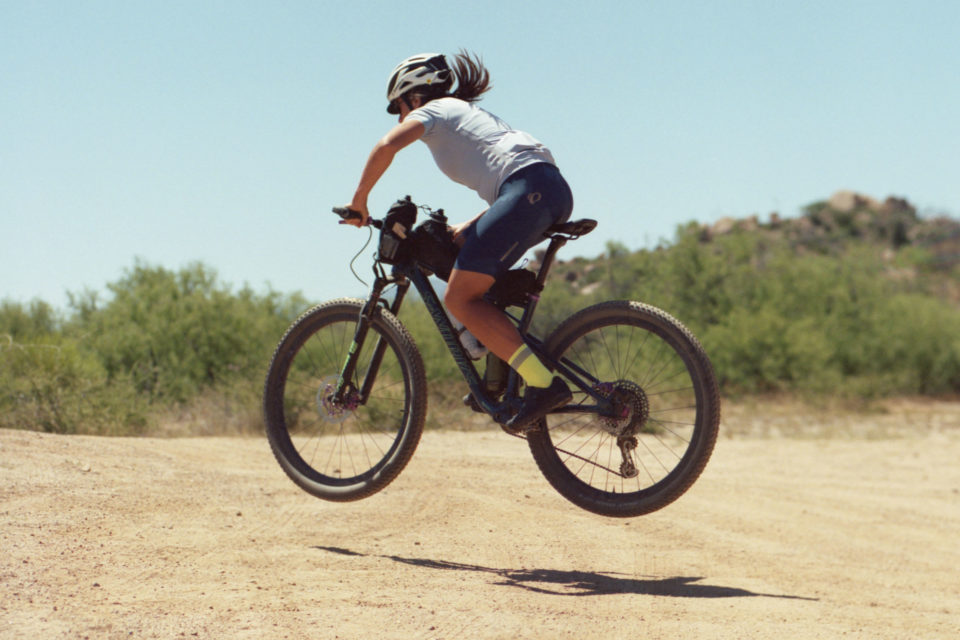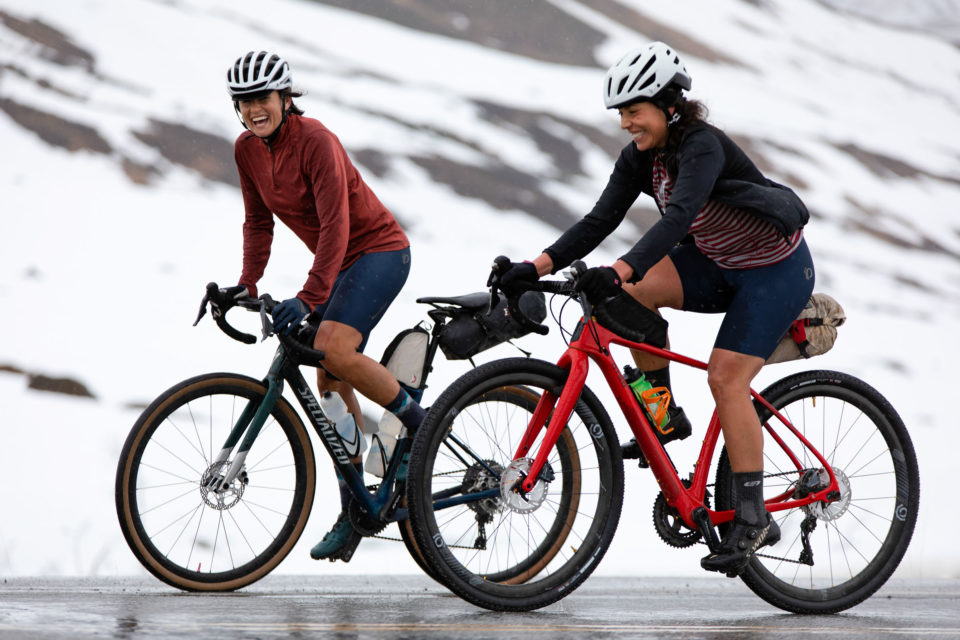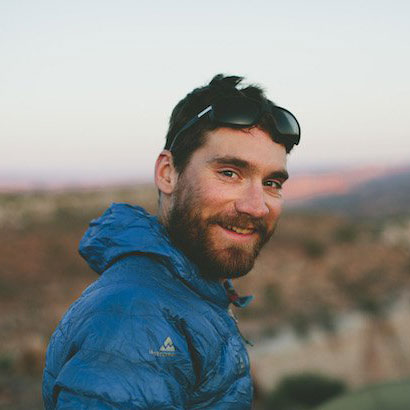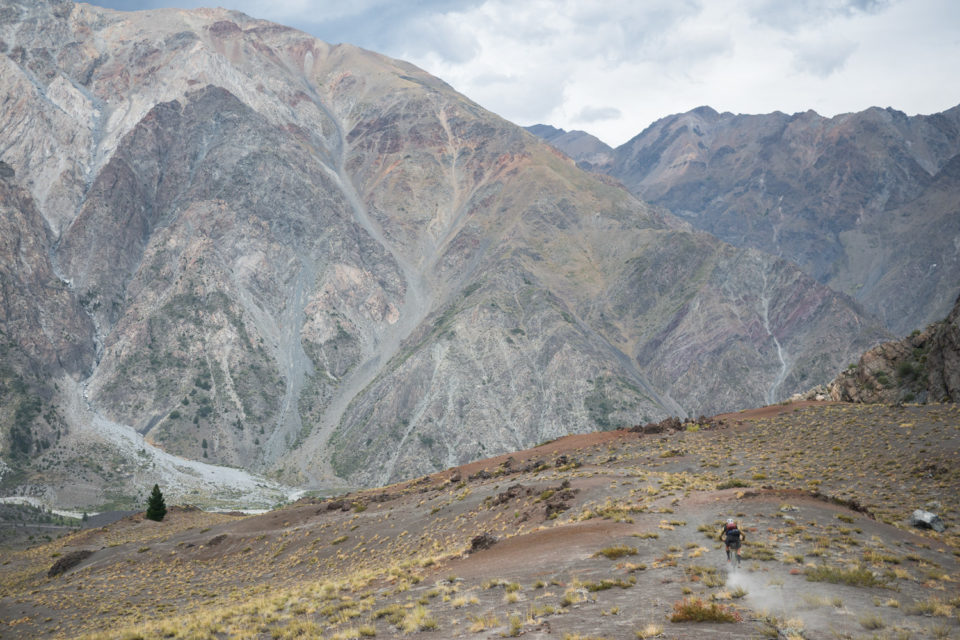Chamoisless and Afraid
Share This
After a few years of unpadded bikepacking, Miles shares his thoughts on riding without a chamois, including what’s worked and what hasn’t, especially with his on-trail management of Crohn’s disease. Find that here, plus insight from Lael Wilcox, Natalie Jones, and Skyler Des Roches on their chamois-free tactics and tips…
Like most people, when I was first getting into bikepacking I assumed I’d require some sort of padded riding short, and made it my mission to find the perfect chamois. The right fit, the perfect density of padding, ideal stitching placement and fabric weight—it felt like a never-ending game of hide-and-go-seek with an invisible person who was constantly kicking me in the ass, literally and figuratively.
It took a few years, but I eventually gave up on the chamois dream. Partly due to the fact that I found riding in padded diapers to be pretty revolting, especially during multi-day bikepacking trips, but also because I had another bum-related conundrum I was dealing with: Crohn’s disease. The added complexity of urgent and frequent bowel movements meant bibs were quickly out of the question. After a few close calls with padded shorts, I decided to remove them from the equation altogether. First, I tried your standard tight-fitting synthetic boxer brief, which was comfortable but had funky seams in places that aren’t conducive to riding a bike. Next, I ordered a pair of merino boxer briefs from Amazon and I wore them on all my bikepacking trips and the majority of day rides last year. They worked surprisingly well. They held up, had well-placed flat lock seams that didn’t irritate me, and were 100% merino wool.
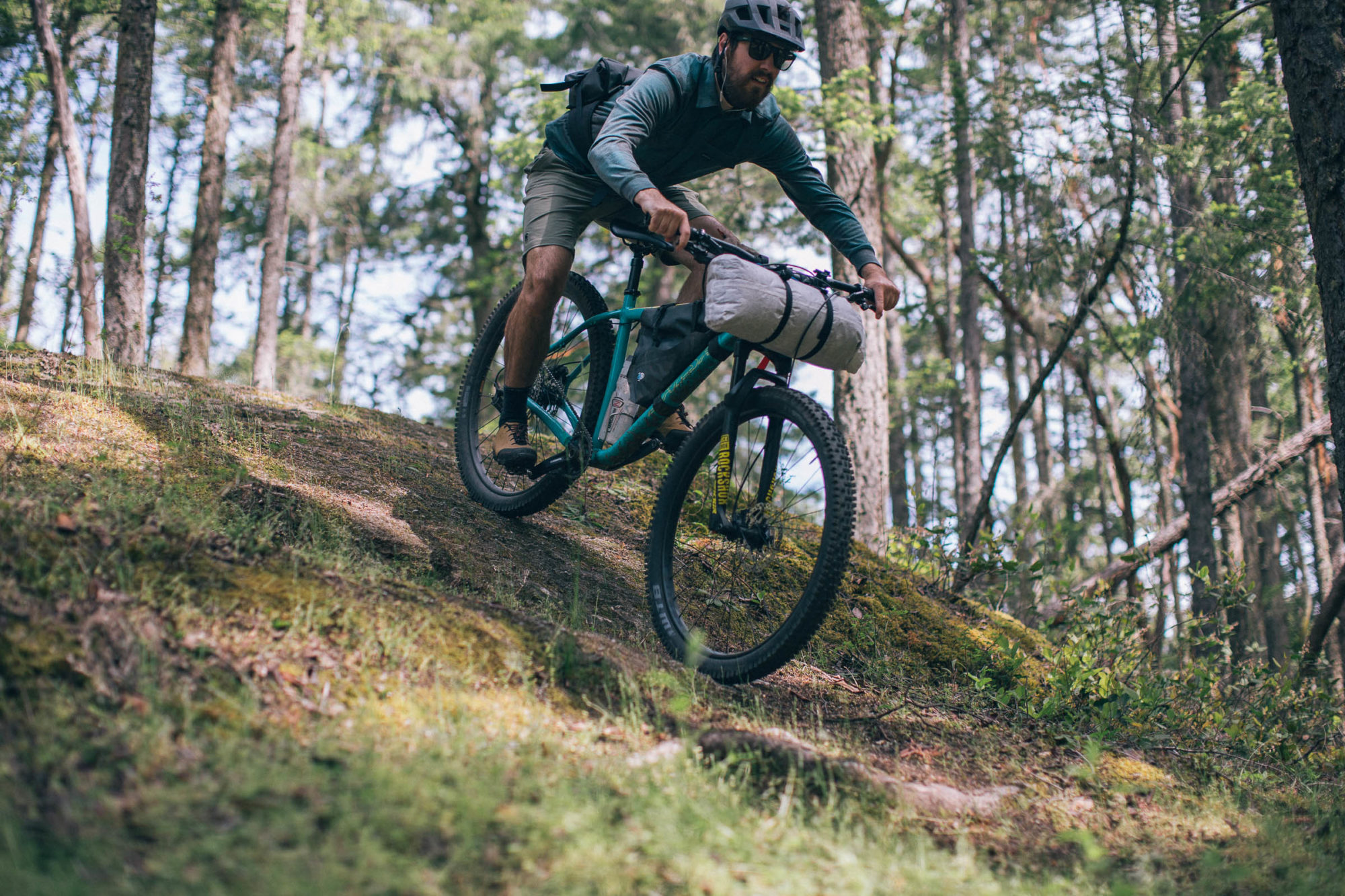
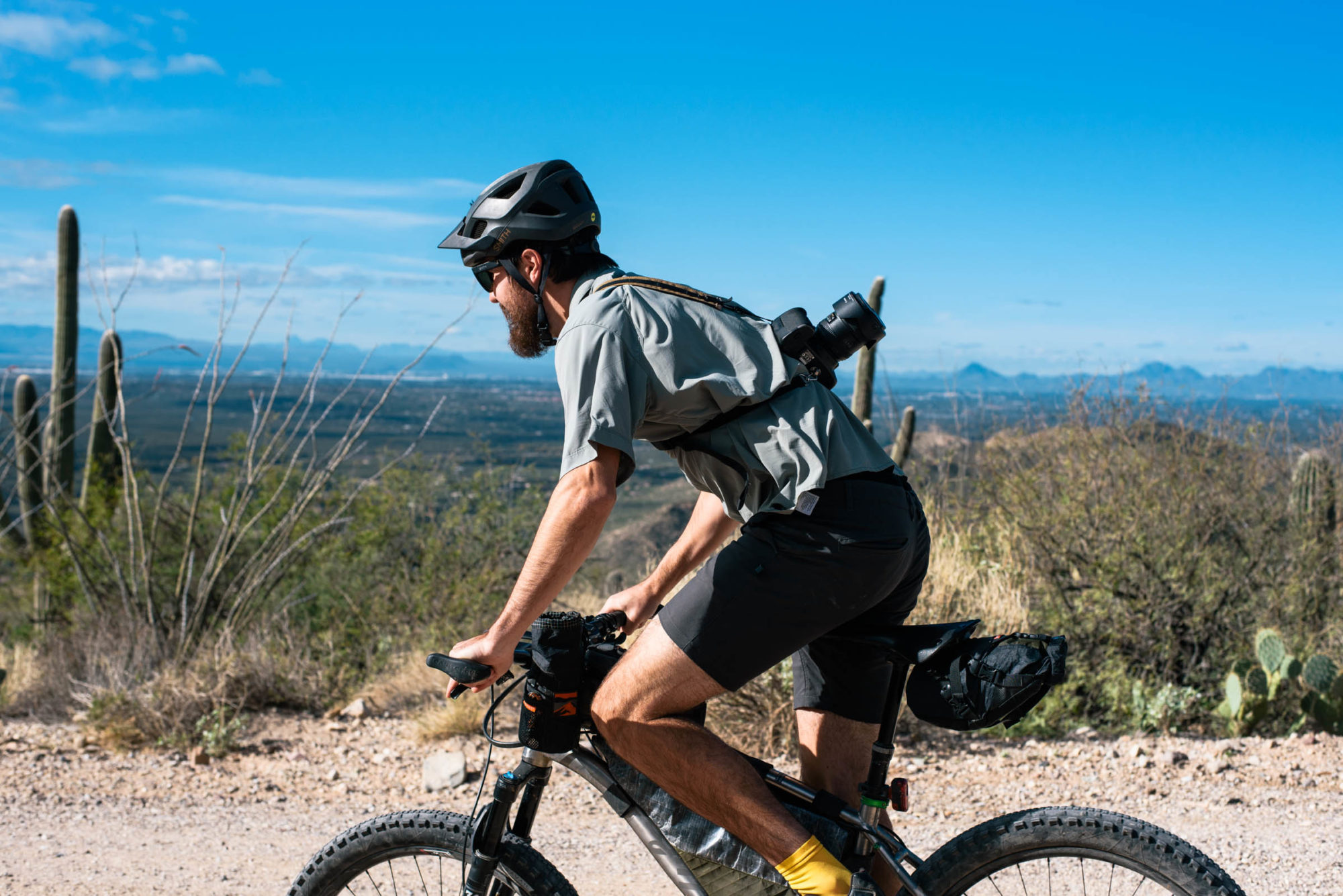
As well as they worked, recommending an Amazon purchase to fellow riders didn’t sit quite right with me, so began the search for a wool underwear manufacturer in North America. Features I’ve found ideal have been a merino wool construction, a tight fit, and a longer-than-average inseam or leg length. For reference, most men’s boxer briefs have an inseam somewhere between six and eight inches, which I’ve found have a tendency to ride up while pedaling. Which brings me to my most recent experiment: Ridge Merino’s Long Boxer Briefs.
Ridge Merino, owned by Jeff and Susan Russell out of Mammoth Lakes, California, specializes in high-quality merino wool apparel. They only use sustainably sourced wool and are a member of 1% For The Planet. What I was most excited for was their Long Boxer Briefs, which have a 9” inseam—perfect for long days on the bike. They have a gusseted crotch, flat lock seams, and are made from 83% merino wool, 12% nylon, and 5% spandex. They are nearly perfect, except for the two seams on the bum, which I’d prefer to be elsewhere. Otherwise, they have held up extremely well and it’s clear a lot of thought has been put into the overall design. It’s only a matter of time before I eat or drink something funky and have an accident on a bikepacking trip, especially with my Crohn’s symptoms worsening over the last few years, and I’d rather have to clean some merino boxers than a hunk of foam sewn into a one-piece swimsuit.
It’s also worth noting that Ridge Merino has a full line of women’s clothing, including boy short underwear. Emily has expressed interest in trying these out, as her regular underwear has creases that meet her saddle, and she expects the coverage of the boy shorts to be more comfortable on long rides.
On the saddle front, it’s still a work in progress. I’ve had some great luck with a Brooks Cambium C17, with the carved design that allows for more flex. Most recently I’ve been giving Ergon’s saddles a shot. Considering I won’t ride a bike without their grips, I figured their saddles must be worth trying as well. My current hardtail mountain bike setup is the Ergon SM Pro paired with one of the two boxers mentioned above, and it’s been great for both long day rides and bikepacking. It’s not really fair of me to recommend a specific saddle, since different riding positions and body types call for different saddles, not to mention the various ways of fine tuning the angles. And even tire pressure will determine how comfortable someone is on a specific setup. I keep my tires on the softer side of things, nearly always have them setup to tubeless so they preform well at lower pressures, and stand up out of my saddle when it makes sense to do so. I have to say, that’s one huge advantage of bikepacking routes with a lot of hike-a-bike and technical singletrack where you’re in and out of your saddle and changing positions often.
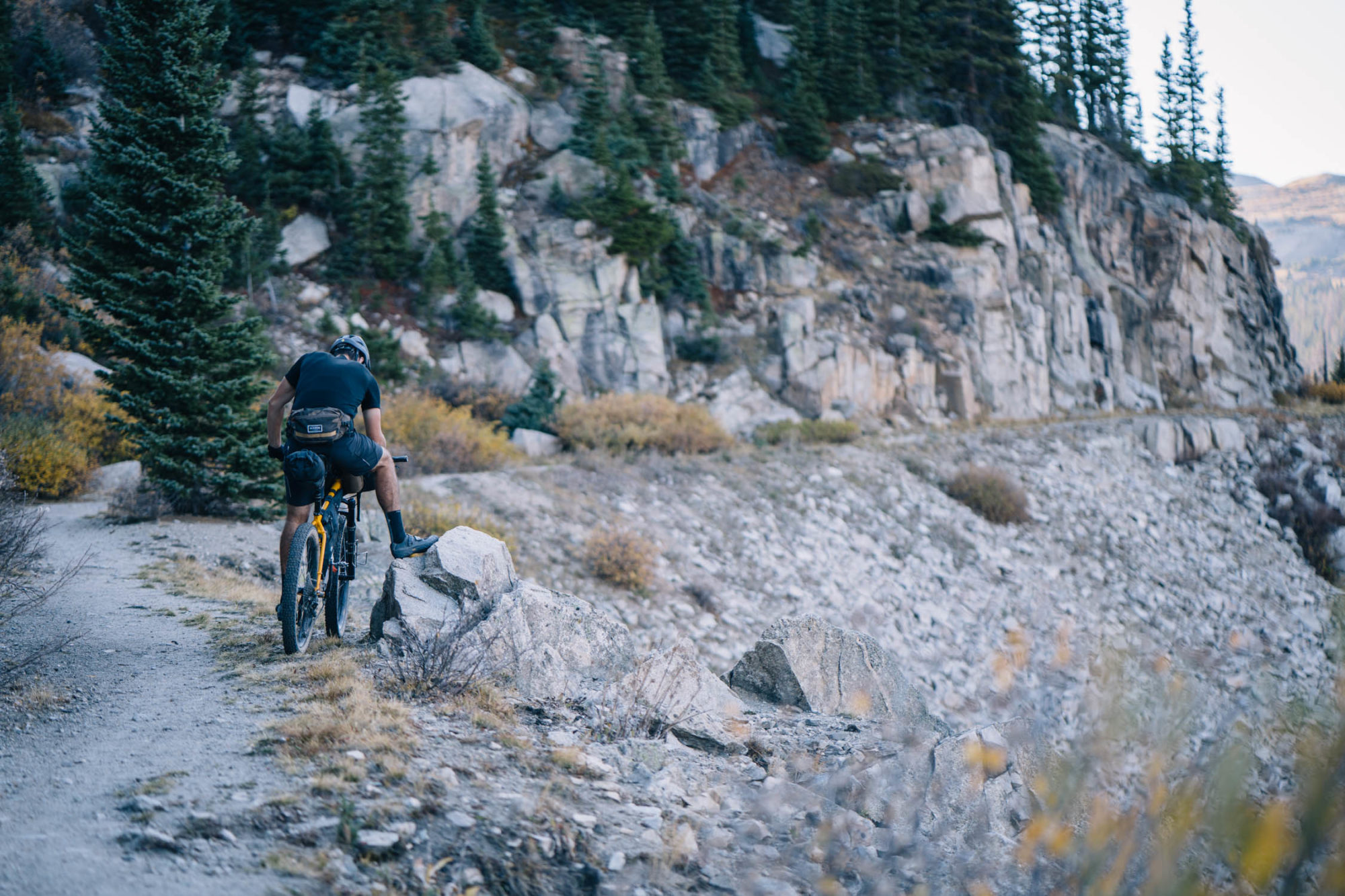
When I was working in bike shops, it was very common for riders to come in and ask for a chamois recommendation. Although I totally knew where they were coming from, I rarely (if ever) sold anyone a padded short or bib. Instead, I’d steer the conversation towards their riding style and overall bike comfort—which I think plays a larger role in butt comfort than what you’re wearing down there. Similar to the inherent benefits of a super plush gel saddle cover, I described investing loads of money into fancy shorts as a temporary solution to a more complex issue. I’m not suggesting our chamois-loving readers to toss them in the garbage, but there might be different avenues to explore for increased comfort.
But don’t take my word for it. I reached out to three friends who’ve had some time experimenting with chamois-less bikepacking to see what led them to it and what’s currently working for them. Check out thoughts from Natalie Jones, Lael Wilcox, and Skyer Des Roches below.
It wasn’t until I started bikepacking that I considered riding without a chamois. A friend of mine had experience with long bicycle tours without a chamois and shared that during a tour across Canada she ditched her chamois by the time she reached Alberta, explaining that it was a bulky, sweaty mess.
I’ve always enjoyed riding with a chamois and have invested in expensive shorts over the years to ensure comfort. But when it comes to bikepacking I found them challenging. They are tricky to pack, take time to dry if washed, and I would always require more than one pair. On a multi-day trip in the Chilcotin Mountains in British Columbia, I was having to wash a pair and hang it to dry, leaving it dangling on my bike to get dusty and dirty. Not a great option. Both can lead to unpleasant rashes and chafing.

While at the Bikepacking Summit last year in Georgia, I asked Lael Wilcox how she managed while racing multi-day events such as the Tour Divide. She reported to me that she wore a bib short without the pad. She had the chamois pads removed from her bib shorts. She said her butt got used to it and she did not experience problems. I asked a few other bikepackers at the Summit and got varied tips, such as wearing wool underwear and to start on shorter rides so your butt gets used to it. All of the riders, I noticed, were not wearing chamois shorts while we went on rides. I admit I felt a little strange checking out everyone’s butts for the obvious chamois bulk or lack thereof.
I decided to give it a try for myself and chose an overnight gravel route I was riding with Miles. I was surprised how well it went. I didn’t feel a thing until the afternoon of day two. I attribute the discomfort with the pressure point of underwear seams against my saddle. My takeaway lesson would be for females to wear wool ‘boy short’ style underwear, free of any seams in the area of the saddle. I might give Lael’s suggestion a try and remove the padded chamois from an old pair of lycra shorts, too. They would be compact and quick drying.
All in all, I really enjoyed riding chamois free. It feels way less bulky without all that padding and I can feel comfortable remaining in my cycling gear after riding without the urge to get them off. I have even started mountain biking without my chamois shorts!
Photos by Rugile Kaladyte
I started bike commuting to work in Tacoma, Washington, when I was 20. It was four miles, mostly downhill to the restaurant, and four miles back up. My uniform was a black t-shirt and jeans, so that’s what I rode in. Riding to work became riding all over town and then riding 50 miles to visit my sister in Seattle. My bike was my transportation. I never thought about wearing special clothing beyond a rain jacket for precipitation. It was during the ride to Seattle that I had the idea to ride across the country. It was so clear. If I could ride to the next city over, I could just keep going. I could imagine the lifestyle: riding all day, carrying what I needed, camping at night, and continuing on the next day. I worked all summer to save money and set out the next fall on a 2,500-mile trip from Portland, Maine, north to Montreal, and then south to Key West, Florida. I rode a 1982 Bianchi road bike with no braze-ons for racks, so I just carried a saddle bag and a handlebar bag. My sister bought me a pair of bike shorts. They felt weird when I tried them on, so I stuck with running shorts and cross-country skiing pants, which were great because they had wind protection in the front and stretchy fabric in the back.
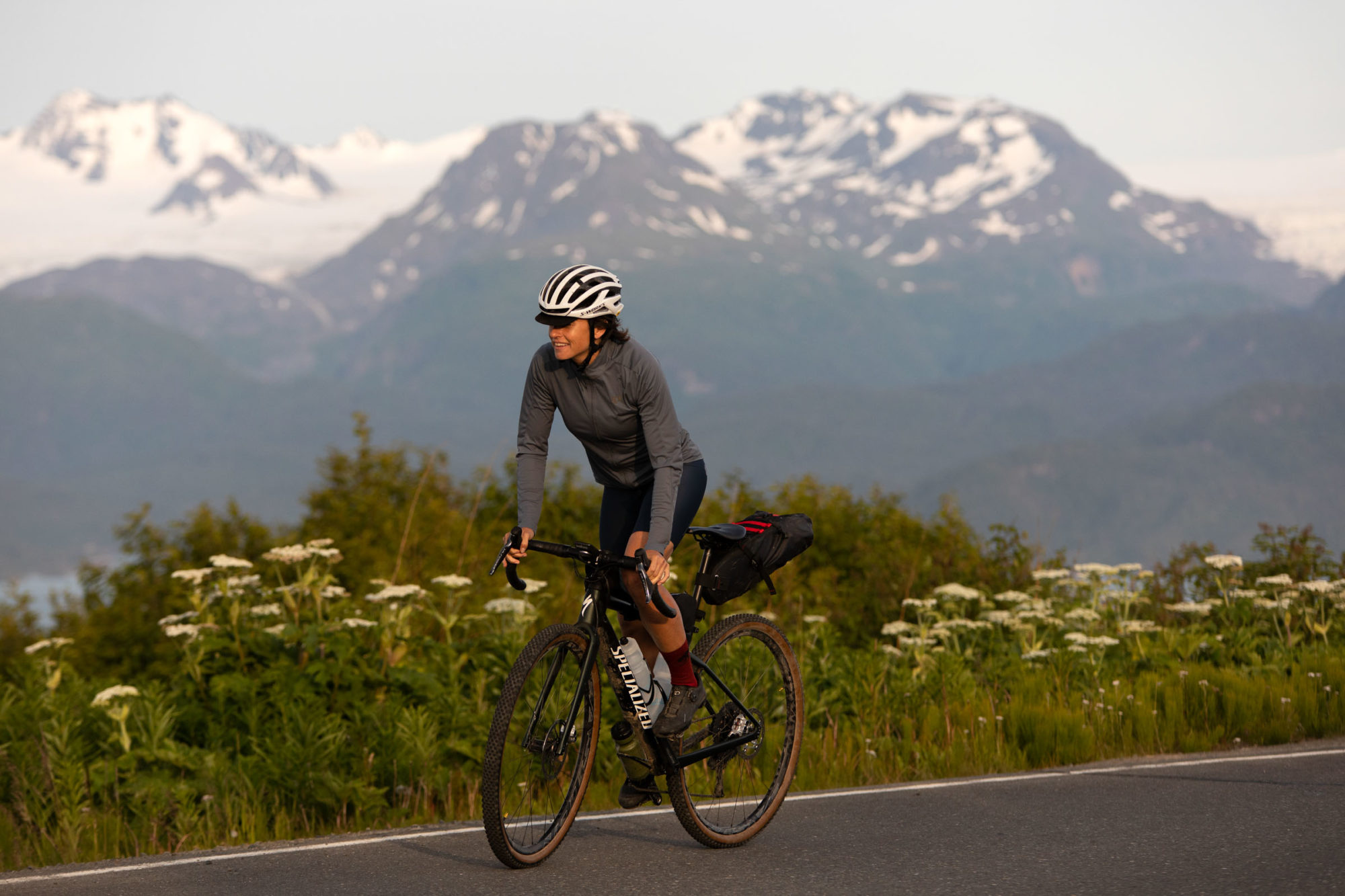
I rode a leather saddle for that trip and for the next few years. I later got a Cannondale Hooligan with 20” wheels as a travel bike and realized that the cheap saddle that came with it was just as comfortable as the heavy leather saddle. I rode that for a year until the material wore out, replaced it with another take-off saddle until that material wore out. My only real complaint there is that those saddles weren’t very durable. I’ve been riding the same Ergon Women’s SR saddle for the past two years on every bike and I absolutely love it. It’s a road saddle, but works great for me for mountain biking as well.
In January of 2018, I cut the chamois out of a pair of PEARL iZUMi PRO bibs. It was a revelation. With no tight waistband, I find bibs are extremely comfortable. The PI ones have a fantastic design with very few seams and the shoulder straps cross-over in the back so you can stretch them down to pee, instead of having to get naked on the side of the trail. I have been wearing these bibs for every ultra-endurance race for the past two years, including the Hope 1000 in Switzerland, the French Divide, the Tour Divide, the Silk Road Mountain Race in Kyrgyzstan, the Cohutta Cat in Georgia, the DKXL, and the Arizona Trail. This summer I raced the Kenai 250 in the PEARL iZUMi Interval Cargo bibs with the chamois cut out. While they’re not quite as comfortable as the PRO bibs, I do love the cargo pockets, a great place for my phone so I can listen to music and books while I ride.
My main argument against chamois for bikepacking is that on multi-day trips, there often isn’t much of an opportunity to wash or even rinse clothing. I strongly advocate for minimal packing and only bring one pair of shorts. Less gear keeps your bike lighter and more fun to ride. Chamois are like sponges. I don’t think wearing the same one day after day is very hygienic. This could lead to saddle sores.
Seat comfort is personal and different solutions will work for different people. A winning combination is a comfortable saddle, a good pair of shorts, and consistent riding so sitting on a bike never feels foreign. I’ve found commuting to be the best way to make sure I get on my bike every day.
Over the years, I’ve heard a handful of stories about peoples’ transformative experience of eschewing the chamois and finding comfort without the crotch-mop. That is not my story (perhaps why Miles asked me to write about my experiences riding without a chamois). Rather than a long dependence on riding with a chammy, from which I was only able to break free after summoning a deep courage, my relationship to padded shorts was extremely brief.
In around 2007, I bought my first and only chamois, a budget version made by Mountain Equipment Co-op, which was on clearance for $37. These were rather rudimentary compared to the shorts I see in bike shops these days, with their thermo-molded, air-flow-optimizing pads, and smooth fabrics. The pad was a peanut-shaped piece of synthetic velour overlaying a thin piece of open-cell foam.
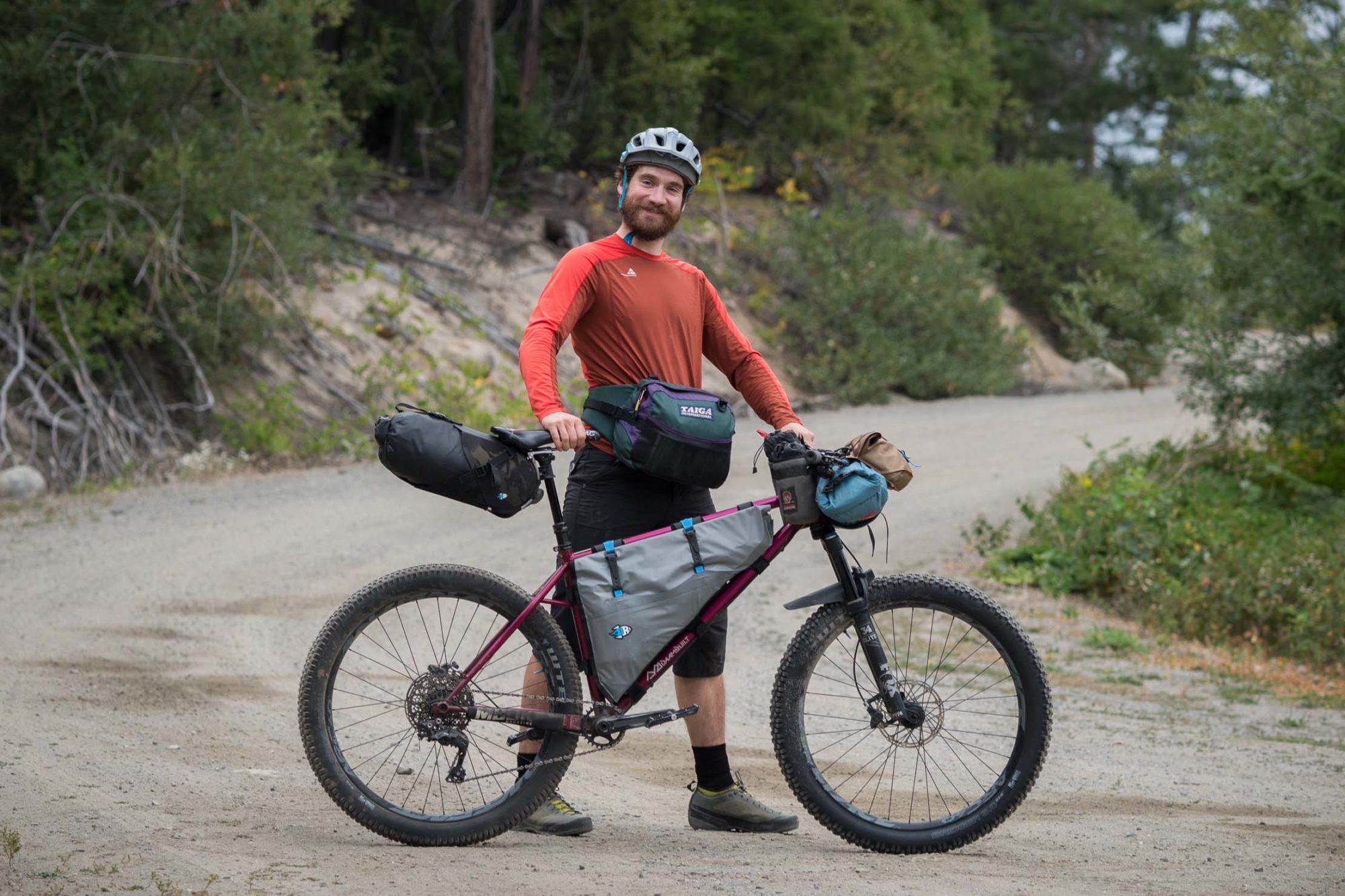
I was getting more and more in to cycle touring, and I had done enough online reading to know that anyone thinking of riding long distances usually did so wearing a chamois. So, on my next tour, I brought along the new shorts, and wore them once my butt started to hurt. I observed:
1) They didn’t make my uncomfortable saddle become comfortable.
2) They were a sponge, situated in place to absorb the foulest the human body has to offer.
3) I did not want to wear them two days in a row without first sending them through the washing machine.
4) Lycra was nice.
And so, chamois were a bit of a non-starter for me. My $37 experiment did not convince me to go out and spend $150 on something with a quality pad. Instead, I focused on finding a comfortable saddle, a process that took me nearly a decade to complete. Over the years, having tried Brooks (they all made my peepee go numb), Selle Anatomica (comfy, but under-engineered and extremely easy to bend), Specialized (close but not quite), Ergon (numbness, again), and several other conventional saddles, I’ve learned a bit of what to look for. Many high-performance saddles are made for use with a chamois, and use thin, high-density foam. Many “comfort” saddles are made for pedaling short distances around town, and use deep, low-density foam. Neither works for me. I’ve had good luck with a medium-depth, medium-density foam saddle. I have also measured my sit-bones (a key step!) and found that I require a 140-147mm saddle width, which is medium width. These days, I ride happily with a WTB Koda, WTB Volt, or Chromag Trailmaster DT.
My discovery of the benefits of riding in tight, slippery underwear was worth the $37, all those years ago. At that time, I began mostly riding with Barbarian brand compression shorts (left over from my years playing rugby) under my baggies. Later, I picked the stitching out of that discount chamois, removing the padding so that they were just simple lycra shorts. These days I ride in synthetic boxer briefs ($12 on clearance from the story formerly known as Mountain Equipment Co-op), or spandex compression shorts. Of course, I also wear baggy riding shorts on top. With the padding removed, lycra shorts leave little to the imagination if worn alone.
I’m apprehensive to try to convince anyone to ditch their chamois, however. One of the biggest factors in butt comfort, in my experience, is what sort of riding I’m doing. I find it hard to stay comfortable when riding all day on relatively flat, or monotonous surfaces, no matter how dialed my bike fit and saddle choice. On singletrack- or rough doubletrack-heavy routes, the dynamic riding means I’m constantly moving on the bike and there is no opportunity for chaffing or saddle pain. Ultimately, these are the sort of routes that inspire me, so I am rarely stuck in one riding position for hours. If I were doing lots of that type of riding, maybe I would have to revisit my relationship to chamois.
Wrap Up
When it comes to comfort on a bicycle, there are numerous factors at play. The fit of your bike, your style of riding, and small details such as tire pressure and your position on your saddle have more of an effect on overall comfort than you’d think. Back in 2015, when I purchased my first bikepacking bike—a Surly Krampus—I was having constant issues with finger numbness and discomfort on long rides. At that time I wasn’t aware just how low of a tire pressure you could run in 29+ tires, but I eventually dialed it down under 20 PSI and most of my comfort-related problems were solved. I hope hearing from a few different type of riders can play a part in your quest for comfort—specifically for your butt.
If you have questions or comments for any of us, please leave them in the comments below!
Please keep the conversation civil, constructive, and inclusive, or your comment will be removed.






